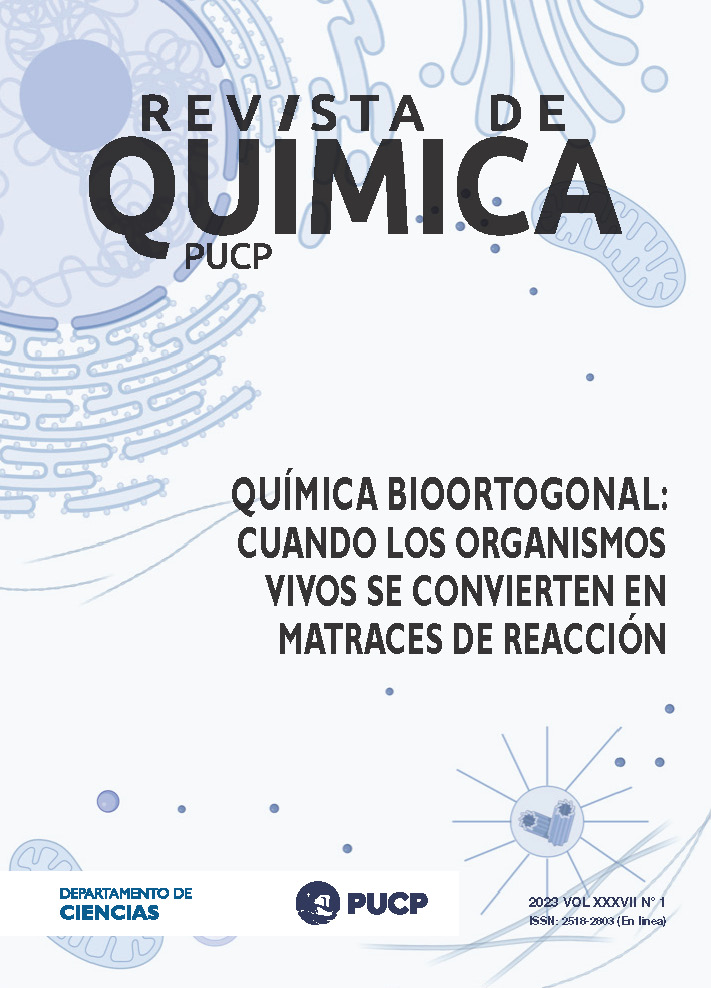Química bioortogonal: cuando los organismos vivos se convierten en matraces de reacción
DOI:
https://doi.org/10.18800/quimica.202301.001Palabras clave:
Química clic, Química bioortogonal, Glicoingeniería metabólica, Nanomedicina, Diagnóstico, TerapiaResumen
En este artículo se introducen los conceptos de química “click” y química bioortogonal, que han recibido el Premio Nobel de Química 2022 por sus numerosas ventajas (sencillez, robustez, rendimientos prácticamente cuantitativos, etc.). Se describen en detalle las principales reacciones bioortogonales, las cuales se pueden llevar a cabo en sistemas vivos, como células e incluso animales, que se convierten en exóticos “matraces de reacción”. También se proporciona una visión general de los últimos avances en bionanomedicina, surgidos gracias a la combinación de la química bioortogonal con las propiedades únicas de los nanomateriales. Para ello, se presentan las principales características de los nanomateriales y describen algunos estudios recientes relacionados con el desarrollo de nuevas herramientas de imagen y terapia.
Descargas
Descargas
Publicado
Cómo citar
Número
Sección
Licencia
Derechos de autor 2023 Javier Idiago-López, Jesus M. De la Fuente, Raluca Maria Fratila

Esta obra está bajo una licencia internacional Creative Commons Atribución 4.0.













